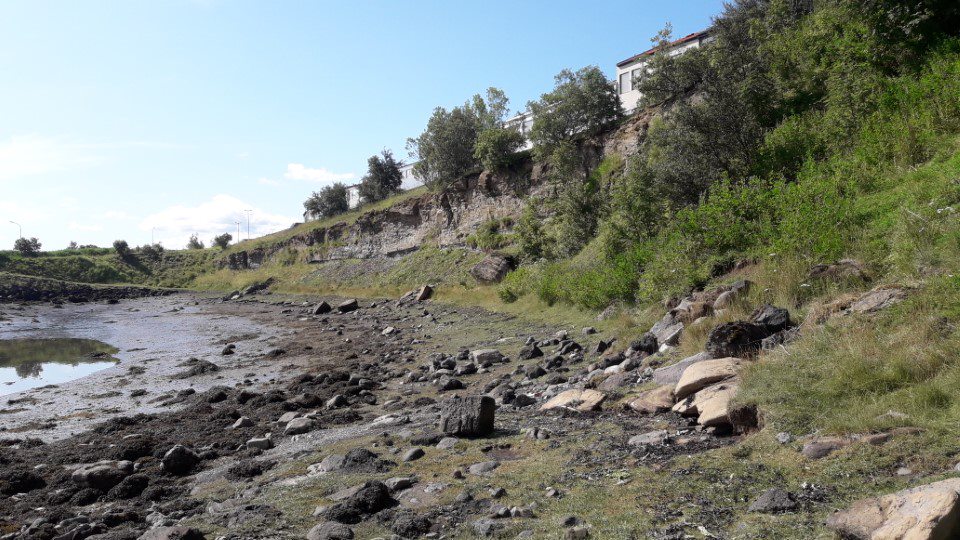Vinna við nýjar heimasíður Umhverfis- og orkustofnunar og Náttúruverndarstofnunar er í gangi. Heimasíða Umhverfisstofnunar er virk á meðan vinnunni stendur. Information in English
Haubakkar, Reykjavik

Háubakkar was declared a nature reserve in 1983. Thick sediment layers exist in the area, indicating signs of atmospheric changes during the Ice Age.
Nature reserves contain natural formations that are important to preserve for their educational value, beauty and special characteristics. The objective of protecting Háubakkar is to preserve the unique geology of the area in its present state.
Geological remains
The sediment layers in Háubakkar belong to the so-called Elliðavogur layers that were probably formed over a long period more than 300 thousand years ago and lasted for at least one hundred thousand years. The sediment layers contain remains of both ocean and dry land which indicates that the sea level has been variable during their formation. The Elliðavogur layers extend from Brimnes south to Álftanes. Háubakkar is one of the best places where the layers are exposed, whereas in many other places the layers are buried beneath younger lava layers and other sediment layers.
The bottom sediment layers are made of tillite, just over three hundred thousand years old. On top of the tillite, ocean sediment layers are found that indicate a higher sea level following the melting of glaciers. The ocean sediment layers contain fossils, particularly types of shells such as Iceland cyprine, Greenland cockle and chalky macoma. These species tend to be found in cold environs, indicating that the ocean temperature was about 1-2°C lower than in modern times. More tillite is found above the ocean sediment layers, estimated to be about 250 thousand years old. The uppermost sediment layers are dry land layers, particularly peat layers, such as palagonite and lignite, indicating that fertile wetlands existed in the area and that the climate was warmer than it is today. Various remnants of plants can be found in the lignite.
The geological formations found in Háubakkar provide important insight into the history of Reykjavík geology, and the sediment layers reflect a 100 year history of great changes in climate, ocean levels and land formation. They also provide valuable information on the biosphere of the ocean and vegetation on dry land.
Vegetation and animal life
The protection of the biosphere was not the original objective of declaring Háubakkar a nature reserve. However, the area is coastal and birdlife is therefore considerable and coastal vegetation is abundant. The diversity of plants that grows on the banks and inclines is great, especially types of grass and flowers. Large trees are also found in the area. Invasive plants such as the Alaskan lupine and wild chervil are also widespread there.
Birds are common in the area, particularly shore birds, since the area is coastal. There is considerable insect life.
The nature reserve is 2.1 hectares.